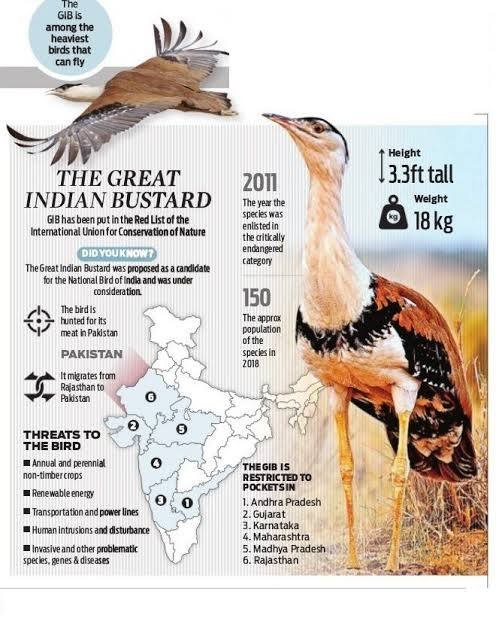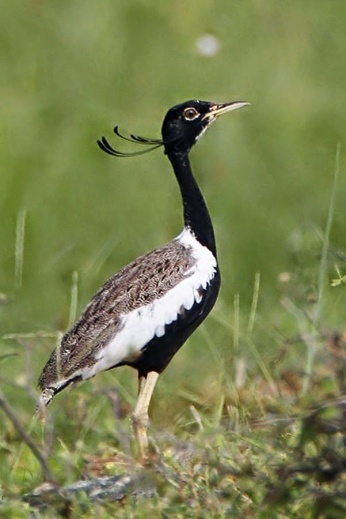Rajasthan
Next Phase of Bustard Conservation
- 03 Jul 2024
- 3 min read
Why in News?
Recently, The Ministry of Environment, Forest and Climate Change (MoEFCC) has approved Rs 56 crore for the next phase of the conservation of Great Indian Bustard (GIB) and Lesser Florican.
Key Points
- The plan includes habitat development, in-situ conservation, completing the conservation breeding center, releasing captive-bred birds, and other activities.
- The National CAMPA (Compensatory Afforestation Fund Management and Planning Authority) had recommended the Wildlife Institute of India’s (WII) proposal to the governing body.
- Plans to recover the species first started in 2013 under the National Bustard Recovery Plan, which later gave way to the Bustard Recovery Project in 2016.
- Later, in July 2018, a tripartite agreement was signed between MoEFCC, Rajasthan forest department and WII.
- As part of the project run by the three parties, two GIB conservation breeding centres and one Lesser Florican centre are functioning in Rajasthan’s Sam, Ramdevra and Sorsan respectively.
- The team at Sam and Ramdevra built up a founder population by collecting GIB eggs from the wild, which were incubated and hatched artificially in the facility.
- Currently, there are approximately 140 GIBs and fewer than 1,000 Lesser Floricans left in the wild.
Great Indian Bustard
- The Great Indian Bustard (Ardeotis nigriceps), the State bird of Rajasthan, is considered India’s most critically endangered bird.
- It is considered the flagship grassland species, representing the health of the grassland ecology.
- Its population is confined mostly to Rajasthan and Gujarat. Small populations occur in Maharashtra, Karnataka and Andhra Pradesh.
- Protection Status:
- IUCN Red List: Critically Endangered
- Convention on International Trade in Endangered Species of Wild Fauna and Flora (CITES): Appendix 1
- Convention on Migratory Species (CMS): Appendix I
- Wildlife (Protection) Act, 1972: Schedule I
Lesser Florican (Sypheotides indicus)
- It is one of three bustard species endemic to India, the others being the Bengal florican and the Great Indian Bustard.
- In the local language, the bird is known as ‘tanmor’ on ‘kharmor’, derived from the root word ‘mor’ for peacock.
- The endangered bird is observed in Rajasthan, Madhya Pradesh, Gujarat.
- Conservation status:
- IUCN Status: Endangered
- Wildlife Protection Act,1972: Schedule I
- CITES: Appendix II






